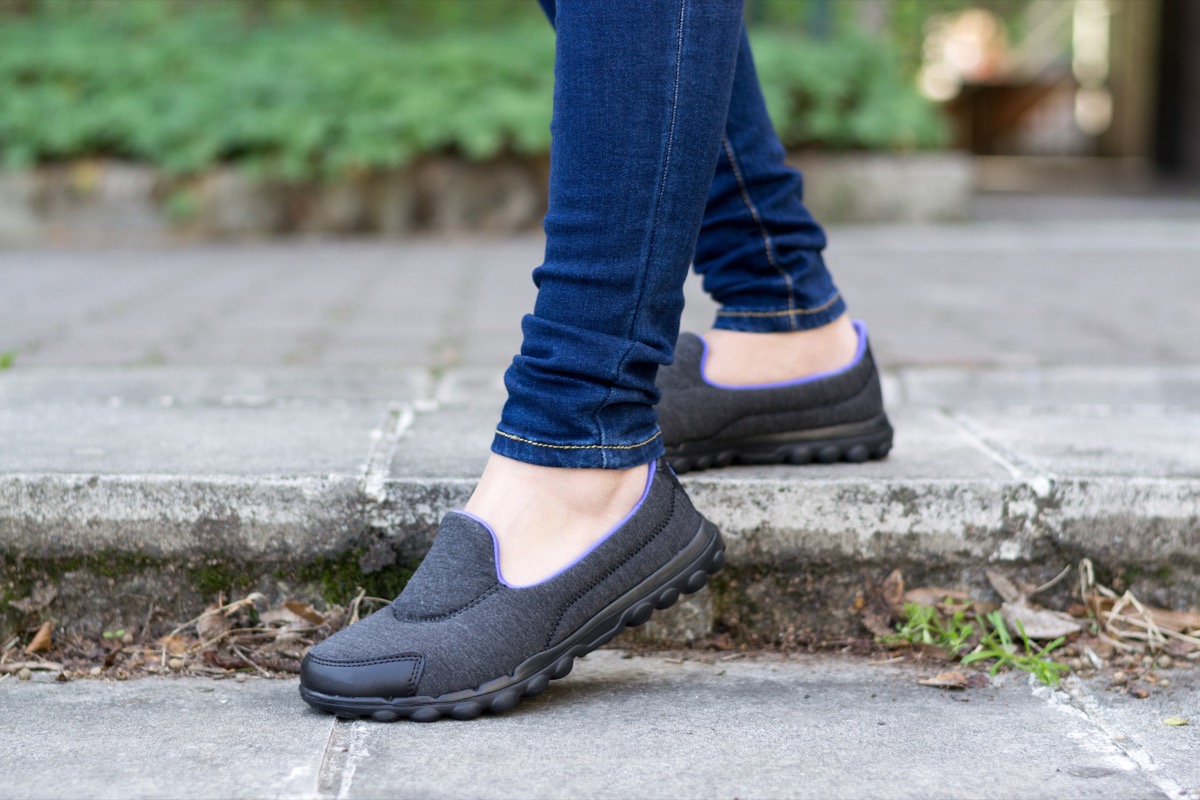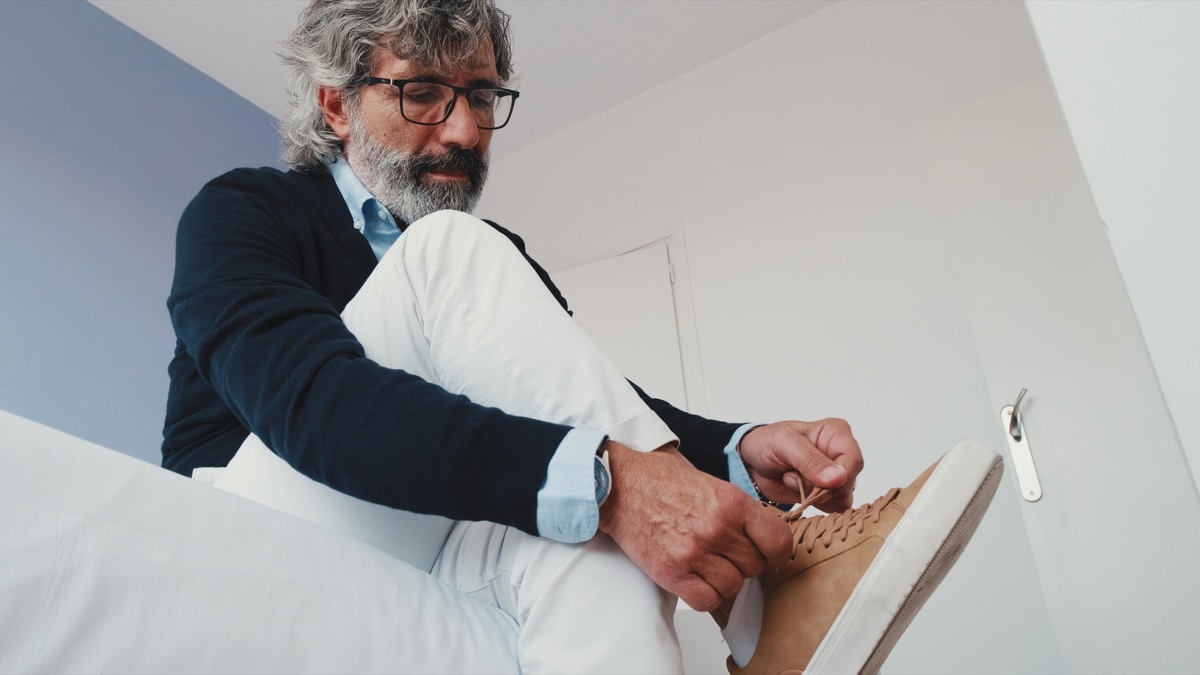5 Ways to Make Your Shoes More Comfortable If You're Over 60, Podiatrists Say
Your feet might be changing, so your shoes need to change along with them.

As you enter your 60s, you may begin to notice a slew of subtle changes to your body. Yet hitting middle-age doesn't mean you have to resign yourself to a less comfortable—or less active—life. In fact, experts say one of the greatest health decisions you can make as you get older is to keep your body moving. But to do so, you're going to need the right footwear—and it may be different from what you're used to.
According to the National Institute on Aging (NIA), foot problems are more common in older adults, and these can lead to reduced mobility, increased frailty, and a higher incidence of injury.
The good news? Gregory Alvarez, DPM, FACFAS, a podiatrist at the Ankle & Foot Centers of America, says there are a handful of simple ways to make your shoes more comfortable if you're over the age of 60—and they may just make you safer, too. Read on for all the expert tips.
READ THIS NEXT: 6 Tips for Wearing Flip-Flops If You're Over 60, According to Stylists and Podiatrists.
1
Wear arch supports or orthotic insoles.

Wearing orthotic insoles can be a simple way to upgrade your arch support, thereby alleviating chronic foot pain, plantar fasciitis, arthritis, and more.
These are distinct from store-bought inserts in that they are often custom-made to address a particular problem, and may require a prescription.
"Orthotic insoles help to maintain healthy posture while providing extra cushioning and arch support," says Alvarez.
But the benefits don't stop there. A study published in the medical journal PLOS One, which analyzed 67 senior subjects, found that "arch supports may provide improved balance and functional mobility while reducing back and lower extremity joint pains" after only six weeks of use.
2
Choose lightweight materials.

Alvarez says that another way to make your shoes more comfortable is to select pairs made with lightweight materials.
"Leather or other flexible materials are often more comfortable than stiffer fabrics like canvas or vinyl. Look for styles with adjustable straps if possible," he suggests.
However, increased comfort isn't the only benefit of this particular shoe type—wearing them may also reduce your fall risk. That's because heavy shoes can make you more likely to shuffle your feet, a common cause of tripping accidents, which affect one in four Americans over the age of 65 each year, according to the Centers for Disease Control and Prevention (CDC).
READ THIS NEXT: 8 Retail Brands That Sell the Best Quality Walking Shoes.
3
Go for a low heel.

Getting older doesn't mean you have to stop wearing high heels, but it may mean becoming more selective in which styles you choose.
Heels that are under two inches tall—or those with a platform or wedge—can help you avoid bunions, hammertoes, or other foot deformities, experts say.
"Lower heels are generally more comfortable than higher styles, as they put less strain on your legs and feet," says Alvarez. "Make sure the heel isn't too narrow for stability as well."
For more style and health advice sent directly to your inbox, sign up for our daily newsletter.
4
Find shoes with good traction.

Having shoes with adequate traction is another key to comfort and safety as you get older.
"Slipperier soles can be dangerous, so look for a shoe that has good grip to help you stay steady on your feet when walking in slippery conditions," suggests Alvarez.
Experts say that besides finding shoes with good external traction, you should also look for pairs with good internal traction—meaning shoes that prevent your feet from sliding around inside. This can lead to fewer injuries, as well as less strain on the ankles, feet, and lower legs.
5
Opt for wide sizes.

Finally, you may notice that your feet get wider with time.
"They don't change in size, necessarily. But feet may get wider, not longer, as we age," Kelly Hynes, MD, an orthopedic foot and ankle surgeon with the University of Chicago Medicine said in an interview with the university.
"They change in their elasticity the same way other body parts do—tissue becomes less tight, causing the increased width and sagging of the arches," she explains.
Hynes adds that as the tissues in the feet begin to deteriorate, some people develop arthritis pain. "Your foot needs more support, which usually means a change in footwear."
That's why Alvarez recommends opting for wider sizes if you're over the age of 60. "If your feet tend to swell after being in the same position for a while, make sure to buy wider widths of shoes. This will ensure a better fit when your feet expand throughout the day," he says.





















